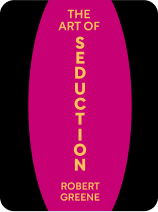

This article is an excerpt from the Shortform book guide to "The Art of Seduction" by Robert Greene. Shortform has the world's best summaries and analyses of books you should be reading.
Like this article? Sign up for a free trial here.
What are Robert Greene’s rules of seduction? What are some principles you should keep in mind when attempting to seduce someone?
In his book The Art of Seduction, Robert Greene lays out his ground rules of seduction. Before embarking on your game, you must first internalize these rules because they are the foundation of successful seduction.
Here’s an overview of The Art of Seduction rules you should keep in mind.
Setting Up the Game: The Ground Rules of Seduction
Before discussing the specifics of seduction, Greene first gives some general advice on becoming a successful seducer. It’s important that you’re prepared with The Art of Seduction rules in mind prior to embarking on your seduction.
#1: Effort. Once you’ve chosen the person you want to seduce (which Greene refers to as your “victim” but we’ll call your “target”), you must put effort into pursuing them. Contact them frequently and incorporate seductive tactics into every interaction you have with them. Don’t fall into the trap of thinking that if love is meant to be, it’ll simply fall into place naturally.
#2: A focus on generating love, not lust. Greene says that seduction is specifically about getting people to fall in love with you—not just to lust after you. While lust enthralls a person in the short term, it usually fades after they’ve gained sexual satisfaction, meaning the seducer’s power recedes swiftly. To be a great seducer, and retain your power, you must gain your target’s love.
(Shortform note: What Greene describes throughout the book as “love” may be more accurately described as “infatuation,” or even “obsession.” He emphasizes having power over your target, and getting them to think about you constantly, to the point of losing control of themselves. While love is typically understood as a deep, selfless affection for a person that grows over time, infatuation implies an obsessive—and often lustful—kind of desire that’s “dramatic, intense, and all-consuming.”)
#3: Constant practice. The most successful seducers refine their craft by attempting to seduce almost everyone they meet. The more you practice a skill, the better you get. And the more successful seductive interactions you have, the more your confidence will grow—and being confident will make you even more attractive to your targets. (Shortform note: Research shows that 63% of men feel that regular dating also improves them as a person, because it allows them to be more open and get to know themselves better. However, far fewer women report this benefit. Psychologists say this may be because women are taking on the “therapist” role on dates with men, while men dominate the conversations. So, be careful of this effect, and try to keep the dynamic balanced.)
#4: Rejection of self-absorption. Greene says successful seducers rarely talk or think about themselves when interacting with their targets. Instead, they put all of their focus onto learning about their target: for instance, about their likes and dislikes, their ambitions, and the kinds of social and romantic interactions they respond well to.
#5: Flexibility of personality. According to Greene, seducers have no single “self.” Instead, they tailor their personality to match what their current target finds most appealing. For instance, if they know their target prefers their romantic partners to be introverted, the seducer will suppress their natural extroversion and craft a more introverted persona.
(Shortform note: This flexibility is reminiscent of the god Zeus, one of the most prolific seducers in Greek mythology, who could change his physical form to appeal to his targets’ tastes. Many of the mythological stories about Zeus involve his sexual conquests—and sometimes rape—of men and women by shape-shifting into forms to lure his targets to him.)
#6: The abandonment of traditional morality. Seducers don’t think about whether their actions are “right” or “wrong.” For example, Greene says you can’t consider whether tailoring your personality to a target is deceptive and morally wrong. This would undermine your game. Instead, he says a good seducer thinks of their actions as nothing more than an entertaining game that allows them to get what they want.
| A Path to Greater Relationship Fulfillment While most sound relationship advice emphasizes the need to make consistent effort toward your relationship and avoiding self-absorption, the abandonment of traditional morality is less universally recommended. In The Way of the Superior Man, for example, David Deida says the ideal male partner should: – Be authentic and honest – Live with integrity and be unfailingly trustworthy – Prioritize deep connection over pleasure – Take responsibility for his actions and learn from his mistakes – Dedicate himself to self-growth and live for a higher purpose – Encourage his partner to become her best, most authentic self Deida says when a man strives to reach his fullest potential in these ways, his life and relationships will be more rich and fulfilling. |
Finally, Greene notes that, contrary to popular belief, one quality that a successful seducer doesn’t require is traditional good looks. As you’ll learn in Part 2, seduction primarily involves using psychological techniques to manipulate your chosen target. Everyone can learn to implement these techniques successfully, regardless of their appearance.
(Shortform note: The research only partly agrees with Greene’s assertion here. Two different studies of single men and women found that, although factors like intelligence and social status were rated as relatively high priorities in a potential partner, looks were considered very important by both men and women—a bit more so for men.)

———End of Preview———
Like what you just read? Read the rest of the world's best book summary and analysis of Robert Greene's "The Art of Seduction" at Shortform.
Here's what you'll find in our full The Art of Seduction summary:
- The psychology of how to successfully entice lovers or devoted followers
- Greene's advice for choosing a seduction target based on their characteristics
- A step-by-step guide on how to seduce your chosen target






